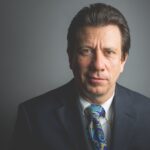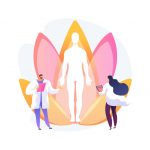Integration? Or Asset Stripping? Naturopathic Modalities Without the Profession
FRASER SMITH, MATD, ND
There are many differences between natural products/natural therapies, and prescription drugs/surgery, but one in particular is important for professional formation. That is the exclusive right to use or prescribe pharmaceuticals and to perform surgery. In some but not all jurisdictions, naturopathic doctors have the right to prescribe pharmaceuticals and perform in-office procedures. However, any medical doctor can tell a patient to use a dietary supplement, and members of the public can access most natural products, or at least some brand of them. That means that there is no protected use of much of our actual therapeutics. It also means that people who didn’t attend naturopathic medical college can provide many of the services that we offer. So, in this month’s column, I want to examine to what degree that is a problem for us, and how it impacts our educational mission. I also want to look at the issue of what an allopathic physician can learn as continuing medical education, or even in an integrative medicine residence, and how that is similar and different from what a naturopathic medical student acquires.
The ways in which naturopathic physicians can practice in an integrative setting, and what that can mean, will be the focus of an upcoming entry for this column. It raises interesting questions of how education of naturopathic students can shift to prepare them for various work contexts in the integrative health care setting(s).
What’s in a Name?
What are allopathic physicians doing on the integrative side these days? The shift in language is worth noting: For a while now, “Complementary and Alternative” has been replaced by “Integrative.” In a very insightful paper discussing integrative medicine, Boon et al (2004) described Integrative Medicine as a continuum.1
The term “alternative” has taken a harder turn toward meaning a true alternative; and thus the more all-encompassing “integrative” acknowledges the need for the best of many approaches to be available to the patient, depending on what he or she needs.
Integrative Medicine in Medical School
It would seem that on the allopathic medical education side of things, there are 3 levels of development going on.
One is the presence of symposia, guest speakers, or even elective coursework. These experiences are not designed to make the medical (allopathic) student competent in performing the therapy or modality. Rather, they are there to promote awareness so that the future physician can know what patients are using and maybe consider what they might encourage a patient to look into. The implicit understanding behind that, of course, is that knowledge discourages misperceptions and prejudice towards those outside the conventional medicine approach.
This writer has been involved in such a series of electives at the University of Illinois at Chicago’s College of Pharmacy and UIC College of Medicine in some capacity since 2006. It always strikes me that pharmacy and medical students are somewhat surprised that I and the medical and naturopathic doctors who use homeopathy, and the licensed acupuncturists, etc, who put on these symposia, are well versed in biomedical sciences. There are always a few that ask questions and 1 or 2 who stay after class to share that they have been using natural approaches for a long time and see the need for something like this for patients. They are usually relieved to see that we are not demanding that patients make a stark choice between “our” way and “their” way.
The next level up are allopathic centers have that something more consistently programmatic. This can be a family practice residency with integrative components, or some kind of elective coursework that leads to a skill. It might focus on modalities more (currently) congruent with the medical care model, like mindfulness or pain management. The higher expression of this is an integrative medicine residency, which is just for a few, but may involve longer-term training. The University of Arizona and the University of Michigan have programs like this.
The third level is a medical university that has a funded center for integrative medicine. This usually has a training component and a clinical care component. It can range all the way from a counseling- or acupuncture-focused group, to something large like the Samueli Integrative Health Institute at University of California, Irvine.2 The Samueli Institute has great funding, a well-rounded-out structure, and includes naturopathic physicians with their own department leader. This type of set-up is almost in a league of its own, but it does serve as a model of what other allopathic integrative departments and centers could evolve into.
Weekends are Made for CME
Aside from the academic centers, medical doctors can pick up various skills in a continuing education format. Medical acupuncture, nutrition, stress management, and other topics are offered in formats that practicing MDs can assimilate. The higher level of organization here, and not exclusively for MDs, is functional medicine. This area of practice and education can offer useful insight into the use of testing for many an ND. The model pulls closer to a medical model, using tests to define what imbalances exist in a patient. This is particularly appealing to newer naturopathic doctors who might enjoy the sense of certainty that a test provides. It is worth noting that laboratory tests are not the domain of functional medicine per se, and that much of what goes on in this continuing medical education and practice are treatments that naturopathic doctors have been using for decades.
Asset Stripping
Dr David Schleich has written extensively about the dangers of our modalities being cherry-picked; and, in a sense, the methods we use can certainly be co-opted. Nobody has an exclusive ownership of nutrition. Medical doctors that identified themselves as Eclectics used herbs in the early 20th century. Most homeopaths were MDs until the 1940s.
It is easy for MDs – who hold many of the cards in terms of cultural authority and resources – to offer this or that therapy and to capitalize on it. Some MDs, to be fair, are quite good at using a natural modality. Some of the greatest homeopaths of our time are medical doctors. The “Clinical Ecology” physicians, like Sherry Rogers and, before her, William Rea and Doris Rapp, did pioneering work.
Medical doctors have a penchant for publishing their own work. And naturopathic doctors are often somewhat chagrined to see that what these MDs are touting is something they themselves learned years ago in naturopathic college and use in their practice. The concept of gluten avoidance, as well as the idea of celiac presentations being genetic variants, is something many of us studied in the mid-1990s. Twenty years later, books like Wheat Belly and Grain Brain – (no one has written Bread Bursa or Pasta Pulse, but probably will soon) – have sold millions of copies. Naturopathic doctors have been writing and doing well with some of their books, but MDs for now have some advantage of sitting with us at an uneven table that tilts in their profession’s favor.
Who “Owns” a Modality is Not So Important
Social science researchers, Orr et al, recently studied a group of naturopathic doctors and medical doctors who interact in an integrative setting.3 Their findings are fascinating and show that these seemingly disparate groups have learned a lot from each other. And yet, there are barriers to integration that arise during training, within the organizations and institutions where they both might work, and in society itself. One misunderstanding about what could be called Complementary and Integrative Medicine (CIM), as Patricia Herman and Ian Coulter point out in an excellent paper that goes far beyond the topic of this month’s column,4 is that CIM professions are too often defined by their signature modality and that this has a limiting effect on the potential for integration.
What Makes Us Unique
One obvious point of high leverage that comes into play for our naturopathic medical education is to better prepare students for an integrative world. That will be the focus of an upcoming article.
There is no doubt that continuing our high standards of education is important, as the clinical results obtained by naturopathic physicians are going to establish their reputation in the community in which they practice. Technical proficiency in certain modalities is important, and survey courses or post-graduate Saturdays do not often bring other types of practitioners up to the level of a naturopathic physician.
But there is an even more pressing task: the “work at hand,” as my mentor, David Schleich, would say. If modalities do not define who and what we are, then we should double-down on what does make us unique. That would be an approach grounded in our naturopathic principles; a systems view of the body, and expertise in working with patients for the restoration of health. That means real expertise in finding disturbances to the determinants of health and connecting symptoms to the physiological derangements that happen because of those disturbed determinants. This requires a specific type of thinking and an educational process that differs from merely a pathologically-based medical education. It does not preclude expertise in many other aspects of biomedicine; however, it could be described as a whole-person approach that a minority of physicians truly practice.
In Aphorism 3 of the Organon of Medicine,5 Samuel Hahnemann describes what an approach different than allopathic medicine can be. Regardless of how much one wishes or doesn’t wish to use the modality of homeopathy, the description of the logic in our approach is stated in incredible clarity:
Aphorism 3:
If the physician clearly perceives what is to be cured in diseases, that is to say, in every individual case of disease (knowledge of disease, indication), if he clearly perceives what is curative in medicines, that is to say, in each individual medicine (knowledge of medical powers), and if he knows how to adapt, according to clearly defined principles, what is curative in medicines to what he has discovered to be undoubtedly morbid in the patient, so that the recovery must ensue – to adapt it, as well in respect to the suitability of the medicine most appropriate according to its mode of action to the case before him (choice of the remedy, the medicine indicated), as also in respect to the exact mode of preparation and quantity of it required (proper dose), and the proper period for repeating the dose; – if, finally, he knows the obstacles to recovery in each case and is aware how to remove them, so that the restoration may be permanent, then he understands how to treat judiciously and rationally, and he is a true practitioner of the healing art . (Samuel Hahnemann, 1810)
Being capable and confident in an approach that respects and works with the self-regulatory and self-repair aspects of the body – along with excellent diagnosis skills and the humility to know one’s limitations – constitute a strong suite of skills. More than ever, that central idea and core skills of naturopathic medicine are our passport to an ongoing role in our healthcare systems.
References:
- Boon H, Verhoef M, O’Hara D, Findlay B. From parallel practice to integrative health care: a conceptual framework. BMC Health Serv Res. 2004;4(1):15.
- Susan Samueli. Integrative Health Institute. University of California, Irvine. Available at: https://ssihi.uci.edu/. Accessed November 21, 2020.
- Orr DE, Bravo Gutierrez G, Fette D. From parallel to partnership: Factors that develop integrative relationships between biomedical and alternative medical practitioners. Leadership in Health Services. 2019;32(4):493-508.
- Herman PM, Coulter ID. Complementary and Alternative Medicine: Professions or Modalities? Policy Implications for Coverage, Licensure, Scope of Practice, Institutional Privileges, and Research. Santa Monica, CA: RAND Corporation; 2015. Available at: https://www.rand.org/pubs/research_reports/RR1258.html. Accessed November 21, 2020.
- Hahnemann S. Aphorism 1-10. In: Organon of the Healing Art. 1810. Available at: The School of Homeopathy. https://www.homeopathyschool.com/the-school/editorial/the-organon/aphorism-1-10/. Accessed November 21, 2020.

Fraser Smith, MATD, ND is Assistant Dean of Naturopathic Medicine and Professor at the National University of Health Sciences (NUHS) in Lombard, IL. Prior to working at NUHS, he served as Dean of Naturopathic Medicine at the Canadian College of Naturopathic Medicine (CCNM) in Toronto, Ontario. Dr. Smith is a licensed naturopathic physician and graduate of CCNM.










